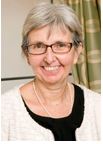palliAGED Practice Tip Sheets: responding to need
A blog post written by Dr Katrina Erny-Albrecht, Senior Research Fellow, Professor Jennifer Tieman, CareSearch Director and Susan Gravier, Research Associate, CareSearch, Flinders University
In 2001, The Myer Foundation commissioned a report into what the future for ageing should look like; 2020: A Vision for Aged Care in Australia. [1] The final plan outlined the foundation’s vision for the future, including that Australians would be ageing in home, advances in technology and building design would have accommodated the needs of those ageing with disability, and for all older Australians cluster housing close to amenities, and equity of access established as the norm. Unfortunately, a 10th anniversary review of the plan found that 'During the past decade, the aged care issue has largely dropped off the radar screen for governments and philanthropic bodies, including The Myer Foundation, and been replaced by issues considered more pressing such as education, the environment, climate change and the arts, amongst others.' [2] This is the nature of policy. But, as we find ourselves again re-examining aged care and how best to meet the needs of an increasingly older population, experience tells us that effective implementation requires action while the issue is on the radar.
Even before completion of the ongoing reviews and inquiries, we know that building our aged care workforce is an immediate priority for Australia. Between now and 2057, the proportion of Australians aged 65 years or older is expected to increase from 15% of the total population to approximately 22% or 8.8 million people. [3] By 2050, it is estimated that the aged care sector will need to employ almost one million workers to deliver care. [4] Currently there are approximately 250,000 aged care workers providing direct care across residential and home-based care, and 70% are careworkers or personal attendants with varied and often minimal training. [5] The people they care for are approaching the end of life, many with life-limiting illness and high-level care needs. Training to meet current and future needs must include palliative care which is evidence-based, current and relevant for the aged care context.
Having recently revised the CareSearch Education Section listing educational opportunities in palliative care, we can confirm that the number of available formal and informal courses for health professionals has grown substantially in recent years. But while we now list opportunities for careworkers, it is also clear that training opportunities specific to their role and needs are limited and often do not include opportunities for independent learning. To support current and future careworkers to understand and build capacity in palliative care we have launched an entry point collection of evidence-based learning resources; palliAGED Practice Tip Sheets for Careworkers. They have been discussed with and reviewed by aged care staff to ensure that both the content and the format are trustworthy and suitable for the intended users. Currently covering 29 care issues and topics relevant to the care of older people with palliative care needs, the aim of this collection is to provide careworkers with a resource for independent or in-house learning. The careworker series is complemented by a parallel series written for nurses new to palliative care or responsible for careworker training and education. Including tips on how to provide good care, the series also prompts reflection on what this means about the care currently being delivered and how this might be improved.
Reflecting our commitment to consolidating resources for the aged care sector, the resources are freely available from the palliAGED website where they are co-located with more advanced palliative care guidance and evidence-based resources that were launched in 2017 for health professionals. Providing a central access point to quality guidance across different carer roles within the aged care workforce, these resources also align with the recently released 2018 National Palliative Care Strategy call for care that is high-quality and evidence-based. We welcome feedback on the series and look forward to developing additional resources in the future to actively support those who care.
References
- The Myer foundation. 2020: A vision for aged care in Australia. Melbourne: The Myer Foundation; 2001.
- Reynolds A. The Myer Foundation 2020: A Vision for Aged Care in Australia Outcomes Review (433kb pdf). Fitzroy (VIC): Brotherhood of St Laurence; 2009.
- Australian Institute of Health and Welfare (AIHW). Older Australia at a glance: Australia’s changing age and gender profile [Internet]. 2019 [updated 2018 Sep 10; cited 2019 Mar 06]
- Productivity Commission. Caring for Older Australians: Productivity Commission Inquiry Report (3.07MB pdf). Canberra: Productivity Commission. 2011 Jun. Report No.:53
- Mavromaras K, Knight G, Isherwood L, Crettenden A, Flavel J, Karmel T, et al. The Aged Care Workforce, 2016 (24.06MB pdf). Canberra: Australian Government Department of Health; 2017 Mar.

Dr Katrina Erny-Albrecht, Senior Research Fellow at CareSearch, Flinders University

Professor Jennifer Tieman, CareSearch Director at CareSearch, Flinders University

Susan Gravier, Research Associate at CareSearch, Flinders University